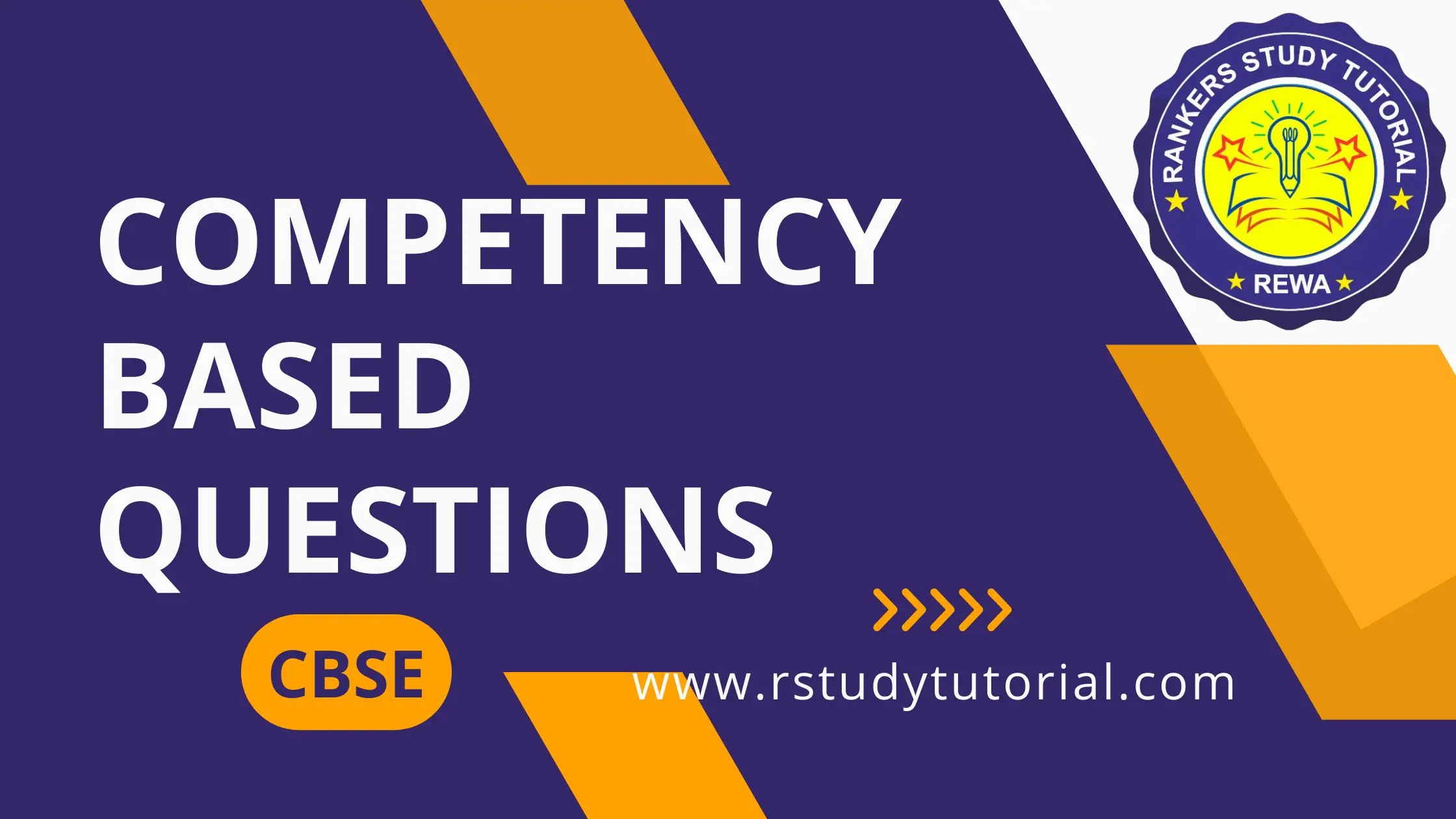Hint: Distinguishes objects based on the emission of light by them and visibility through them.
Question.1. The image shows three objects made of glass.
(a) Only P
(b) Only Q
(c) Only P and Q
(d) Only P and R
Question.2. A student is making a model of a garden. He wants to cover the model with a sheet that allows everyone to see through it. Which sheet should the student use?
(a) paper
(b) clear plastic wrap
(c) aluminium foil
(d) cotton cloth
Ans.1. (b) Only Q
Ans.2. (b) clear plastic wrap
Hint: Concludes that there should be a source of light, opaque object and a surface for shadows to form.
Question.3. A student stands in front of a lamp to produce the shadow of his body. The shadow of the boy is formed on the screen as shown.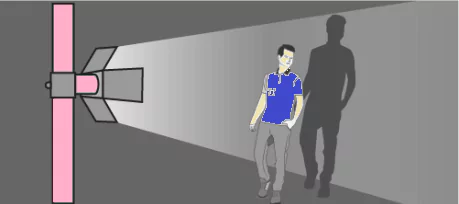
(a) the screen must be placed in front of the opaque object
(b) the opaque object must be placed behind the source of light
(c) the opaque object must be placed between source of light and the screen
(d) the source of light must be placed between the opaque object and the screen
Question.4. A student has the given objects for an experiment.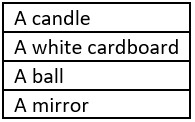
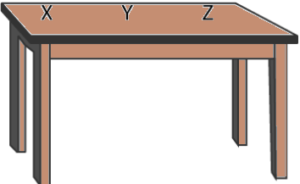
(a) X: candle, Y: ball, Z: mirror
(b) X: mirror, Y: ball, Z: cardboard
(c) X: candle, Y: ball, Z: cardboard
(d) X: ball, Y: candle, Z: cardboard
Ans.3. (c) the opaque object must be placed between source of light and the screen
Ans.4. (c) X: candle, Y: ball, Z: cardboard
Hint: Evaluates criteria for formation of shadows and makes judgment about situations like, shadow of an airplane flying at a higher altitude and shadow of a bird flying nearer to the ground.
Question.5. The image shows a hot air balloon flying at higher altitude.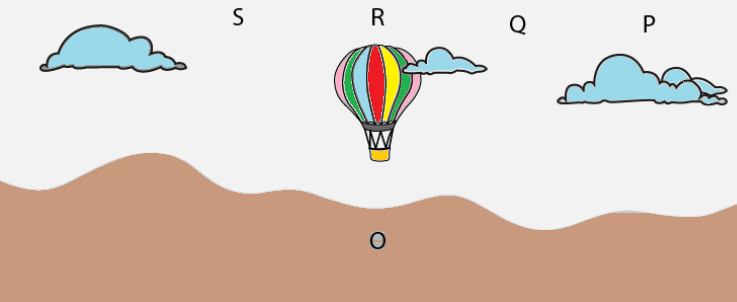
(a) at P
(b) at Q
(c) at R
(d) at S
Question.6. A student learns that the closer the object to the source of light, larger the shadow will be formed on the surface. The image shows the bird flying under the sun and four different position.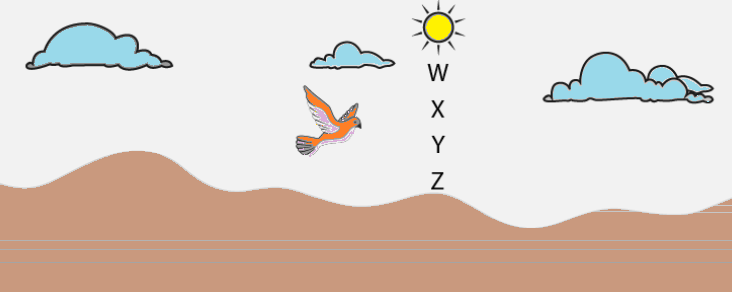
(a) at W
(b) at X
(c) at Y
(d) at Z
Ans.5. (c) at R
Ans.6. (a) at W
Hint: Represents working of a pinhole camera diagrammatically.
Question.7. The image shows a pinhole camera.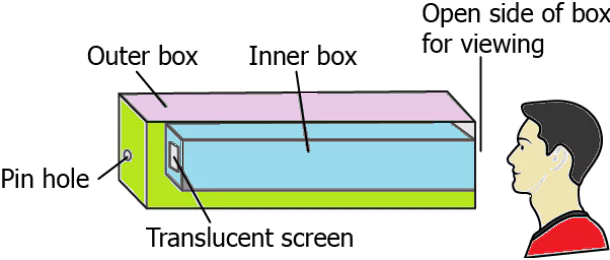
(a) at the pinhole
(b) at the translucent screen
(c) on the inner surface of the inner box
(d) on the upper surface of the outer box
Question.8. A student develops a model of a pinhole camera using two boxes as shown.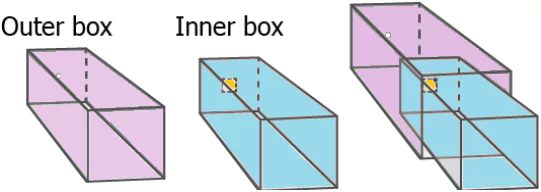
(a) turn the sides of the inner box
(b) make a pinhole in the inner box
(c) paste a tracing paper on the outer box
(d) move the inner box forward or back
Ans.7. (b) at the translucent screen
Ans.8. (d) move the inner box forward or back
Hint: Summarizes the characteristics of image formed by a pinhole camera.
Question.9. A student observes the lighted bulb through the pinhole camera as shown.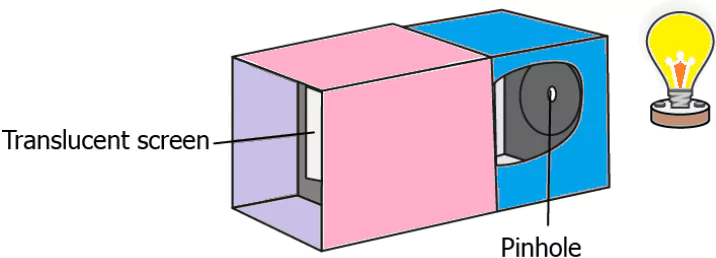
(a) erect image at pinhole
(b) upside down image at pinhole
(c) erect image at translucent screen
(d) upside down image at translucent screen
Question.10. A student observes a tree using a pinhole camera. She decreases the distance between the tree and the camera and looks at the tree through the camera again. The image formed is as shown.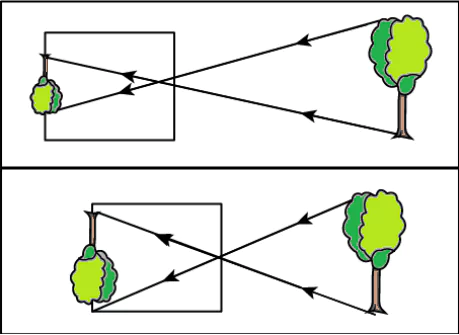
(a) farther the object, larger the erect image
(b) farther the object, smaller the erect image
(c) closer the object, larger the inverted image
(d) closer the object, smaller the inverted image
Ans.9. (d) upside down image at translucent screen
Ans.10. (c) closer the object, larger the inverted image
Hint: Makes conclusion about the nature of reflection shown by a plane mirror.
Question.11. The image shows the reflection of a candle.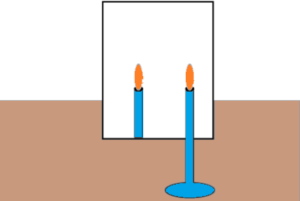
(a) plane mirror produces an upright image of the same size
(b) plane mirror produces an upright image of a smaller size
(c) plane mirror produces an upside-down image of the same size
(d) plane mirror produces an upside-down image of a smaller size
Question.12. A student flashed a light from source on a mirror, as shown.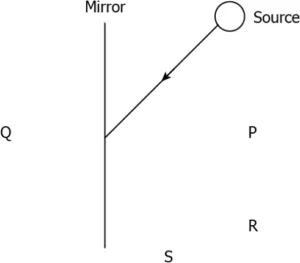
(a) towards P
(b) towards Q
(c) towards R
(d) towards S
Ans.11. (a) plane mirror produces an upright image of the same size
Ans.12. (c) towards R
Hint: Distinguish between shadows & reflections.
Question.13. A student makes two setups using a torch and a ball to study
(i) formation of shadows and
(ii) Reflection of light.
The table below shows some material that was used in creating two setups.
(a) Shadow: glass sheet, Reflection: mirror
(b) Shadow: cardboard sheet, Reflection: mirror
(c) Shadow: tracing paper, Reflection: glass sheet
(d) Shadow: cardboard sheet, Reflection: tracing paper
Question.14. The image shows the setup of the reflection and shadow formation.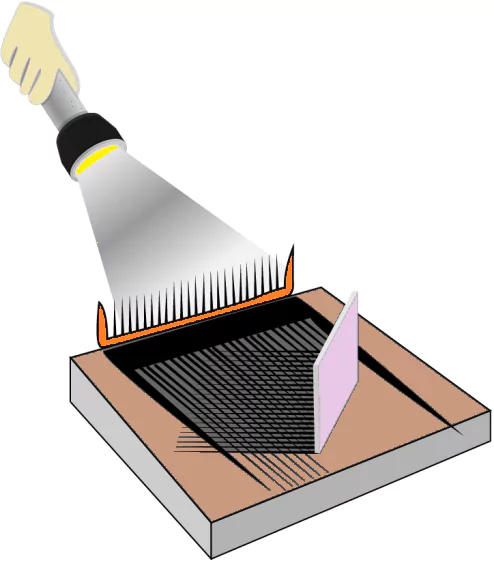
(a) shadow forms when light is blocked by an object, whereas reflection is bouncing of light
(b) shadow forms when light passes through an object, whereas reflection is absorption of light
(c) a shadow forms when the light is blocked by an object, whereas reflection is absorption of light
(d) a shadow forms when the light passes through an object, whereas reflection is bouncing of light
Ans.13. (a) Shadow: glass sheet, Reflection: mirror
Ans.14. (a) shadow forms when light is blocked by an object, whereas reflection is bouncing of light

